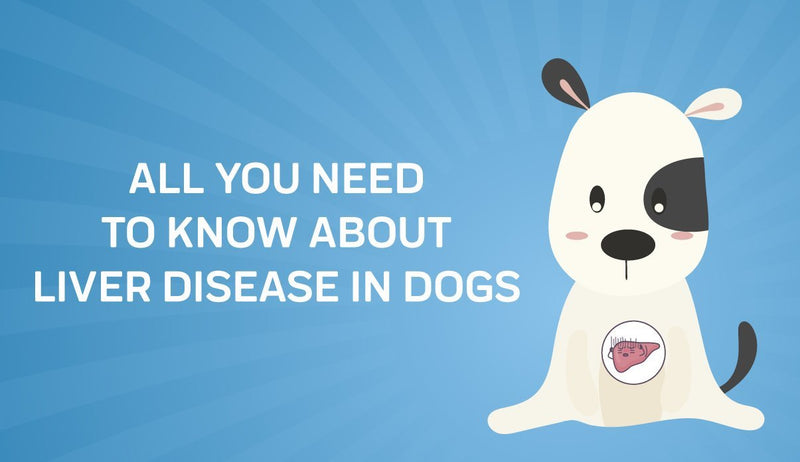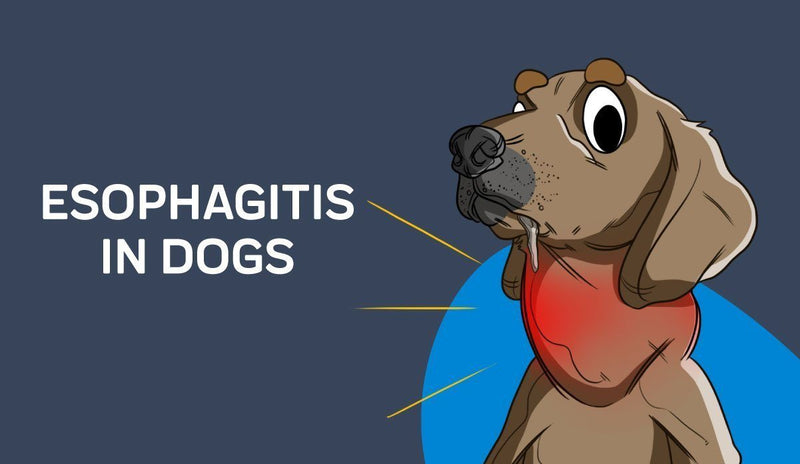
Picture this. It's a warm summer day, there is little to no breeze outside, and you're on a walk with your canine companion. You notice your dog is wide-eyed and his or her tongue is poking out from its already-opened mouth. How do you know if it's time to cut your walk short? At which point do you decide that your dog needs to be taken inside for relief from the heat?
First, place your open palm onto the concrete sidewalks to feel for the temperature of the pavement. There is a certain point where the sunshine has warmed the ground to a heat that actually burns the pads of dogs’ paws. When the outside air and overall weather reaches a height of seventy degrees Fahrenheit, researchers have found that the ground can be upwards of one hundred twenty-five degrees, at a bare minimum.
This is beyond the point of safe walking conditions for dogs. When the ground reaches a temperature of this magnitude, your dog’s paws can actually start experiencing first-degree burns as a result of repeatedly stepping on the heated surface. From asphalt parking spaces and wooden balconies, to metal floors and outdoor pavement, many surfaces pose a threat to your dog's paws in warm weather conditions.
Once you place your palm on the ground beneath your dog's paws, you'll be able to make an executive decision as to whether or not it's too hot for your dog to be walking around. If you decide it is no longer safe for your pup's feet, you can take your dog to a grassy area and explore the area with the soil beneath your feet instead.
You could also plan ahead by checking the weather forecasts for the week. Take your pup on a stroll during the cooler hours of the day to prevent your dog from being hurt. Most often, early mornings or late evenings are when the temperature is at its coolest. That said, when you are in the moment, planning ahead is not helpful advice. You’ll want to help your dog cool down, especially when temperatures skyrocket in the summertime.
What are other signs you can look for when your dog becomes overheated? Sweating, of course! Did you know that dogs do sweat? Believe it or not, they perspire, but it is not in the same way that we, as humans, sweat. Let’s backtrack for a moment.
The only animals that do not sweat are those that are classified as cold-blooded animals. Since their internal environments are totally and completely reliant on their surroundings, animals such as amphibians, fish, and reptiles do not have the ability to sweat. They don't self-regulate their body temperatures, so they don't need to sweat in order to assist the body in returning to a state of homeostasis. Instead, as ectotherms, they have other natural behaviors that help them return to a regular internal temperature.
Dogs, on the other hand, are considered warm-blooded animals. As mammals that survive by regulating their own body temperatures, dogs sweat, but they also pant. The two behaviors go hand-in-hand when it comes to their bodies returning to a normal state.
So, can dogs sweat? Yes, absolutely! But this answer barely scratches the surface of the basics for sweating dogs.
- How do dogs sweat?
- Do dogs have sweat glands?
- Where do dogs sweat from?
The list of questions goes on and on, but we’ll answer them fully in this article! We will start out with an overview of how dogs sweat and then make our way into a discussion about where dogs sweat from, followed by an explanation of the very unique sweat glands of dogs.
Dogs do sweat, but sweating is less important for regulating body temperatures for dogs than it is for people like you and me. As humans, we rely fairly heavily on the functionality of our sweat glands. Dogs do not place as much faith in their sweat glands because there are other ways of lowering body temperatures in dogs. That said, they still have sweat glands. In fact, there are two different types of sweat glands for dogs.
The two types of canine sweat glands are...
- Apocrine glands
- Merocrine glands
Canine Apocrine Sweat Glands
The apocrine sweat glands of dogs work to facilitate the release of pheromones. In case you are unfamiliar with pheromones, they are the scents that dogs' bodies emit naturally. Pheromones are responsible for our personal scents as well, but for dogs, their pheromones are far more important and relevant than ours are.
As we know, dogs take great care to mark their territories and let other dogs know, by way of scents, that they are in the vicinity. From showing dominance by urinating on trees around the neighborhood, to communicating with dogs of the opposite sex to let them know if they are ready to reproduce, dogs send messages primarily by way of their pheromones. You could almost say pheromones are a sort of language for dogs.
Anyway, pheromones aside, let’s go back to the discussion on apocrine sweat glands! Even though apocrine sweat glands are categorized as sweat glands, their main purpose centers around releasing pheromones. They help dogs interact with dogs around them, and in turn, pheromones assist dogs in making friends with other pups. Either that, or they enable dogs to figure out if another dog is a threat. All in all, pheromones are the tool that dogs utilize to determine the presence of other dogs.
Canine Merocrine Sweat Glands
Merocrine sweat glands answer the question, “How do dogs sweat?” Merocrine sweat glands differ from apocrine sweat glands in the sense that merocrine sweat glands are areas of the body where sweat is released. Just like the sweat glands of people like you or me, canine merocrine sweat glands help to cool down your dog's body temperature.
For dogs, their merocrine sweat glands are found in their paws, right around and in the pads of their paws. They are in places where there is little to no fur because the fur prevents sweat from leaving the body. Instead, all of the fur insulates your pet's body and keeps sweat from escaping. These are the two types of sweat glands that dogs sweat from.
Where Do Dogs Sweat From?

Dogs sweat from the areas surrounding the pads on their paws. These are the few parts of a dog’s body that are not covered by fur. Hair follicles prevent the sweat from leaving the body. Instead, the fur makes dogs even warmer. But dogs have to sweat from somewhere, and that is anywhere that fur is not.
There are many common misconceptions about where dogs sweat from, so we thought we would clear up the two most misguided beliefs about dogs sweating. Many people believe dogs sweat from their armpits and from their tongues, but let’s talk about why this is not the case.
From The Armpit
Interestingly enough, dogs do not sweat from their armpits. We might assume that they do because that is a major source of sweating for humans, but as we mentioned while explaining canine merocrine sweat glands, dogs do not emit sweat in places where fur is prominent. However, this is not to say that dogs do not have sweat glands in their armpits. They do, but the sweat glands are apocrine sweat glands, not merocrine sweat glands.
So, the armpits are the source of pheromones. If you find that your dog smells a little off, as though they are unclean or sweaty, it might actually just be that your dog has pheromones trapped under their fur, or that your dog's oil production is out of control. Another type of gland, known as sebaceous glands, are the source of oils as they are released from your dog's skin. These oils are essential for maintaining a healthy coat of fur.
However, if too many oils are being released at one time, then the coat becomes incredibly shiny and reflective. When oils are in excess, they combine to create an unpleasant scent, hence the reason why your dog might smell sweaty. But instead of actual sweat being the cause of the smells, the scent is caused by oil production in overdrive.
From The Tongue

You might be thinking, "Why in the world would dogs sweat from their tongues?" That is a very reasonable reaction, so let us explain. It can be second nature to assume that dogs sweat from their tongues because panting is a behavior associated with lowering body temperatures for dogs.
But the only thing that dogs really release from their tongues is saliva. Panting helps with lowering their body temperatures, but it relates more so to thermoregulation than sweating. Panting and excessive spit production has to do with thermogenesis, which is the process of returning the body to its original, comfortable temperature.
Along with panting and sweating, dogs also engage in a process called vasodilation, which involves the dilation, or expansion, of the blood vessels. These behaviors are of utmost importance for dogs because their fur makes it hard for them to cool down, especially once they reach a certain temperature.
Why Do Dogs Sweat?

Dogs sweat for the same reason other warm-blooded animals sweat. The reason dogs sweat is that their insides are much warmer than is comfortable, so their body is attempting to resolve the issue by finding ways to lower their internal temperature. The natural response to overheating in dogs is to sweat.
Given the fact that dog sweat glands are so small and so sparse, sweating is not the most effective way of cooling down for dogs. Though sweating does play a part in lowering the body temperature of dogs, other behaviors that dogs incorporate into their lives include vasodilating and panting.
Panting serves a great purpose for dogs lowering their body temperatures. When dogs pant, they are quickly inhaling and exhaling air, which causes the temperature of the air to become even higher. But the trick is that this hot air is then breathed out of the dog's mouth and nostrils. When the heat leaves the dog's body in this way, it transforms from air into moisture.
This wetness begins to cool the dogs down over time, and continuous panting is an effort to continue to cool down their bodies. The spit on your dog's tongue and the production of saliva in your pup's mouth work in tandem with the air. The warm air combines with the spit and saliva, and together, everything evaporates. The cycle of these actions ultimately cools down the body of your canine companion.
What Causes Dogs to Sweat?
There are multiple reasons why dogs sweat. Like we talked about earlier, one of the most obvious reasons for sweating dogs is an incredibly warm environment.
Other causes of sweating dogs are…
- Heightened levels of anxiety
- Persistent stress
- Lack of airflow in a closed environment
- A lot of playtime with little to no downtime
- Sitting close to a campfire or furnace
- Taking a nap too near to an indoor heater
- Dehydration or general thirst
- Sitting in a car with closed windows
- A fever as a result of an infection or other illness
- Too much stimulation at once
- Overactive sweat glands
Anxiety and Sweating Dogs
When overactive sweat production is the result of an anxious mindset, it can seem like nothing will relieve your dog from the constant sweat and heat. But there is actually a way of resolving the excessive amount of sweat that your dog is experiencing. Rather than focusing on the sweat, turn your attention to the anxiety. Once you relieve the anxiety and stress, you’ll notice a decline in overall sweat production. From there, your dog will not only feel calmer, but your canine companion will be more comfortable temperature-wise, too.
Where to Buy CBD for Sweating Dogs
Did you know that CBD can help dogs with sweat production? Cannabidiol for pets with anxiety-induced sweating can help dogs get their sweat glands under control. When sweating is a result of panic, anxiety, or stress levels, introducing CBD to your dog's daily intake can work wonders for resolving the persistent sweat. You might have already tried cooling your dog down by taking him outside or gently spraying her with cool water. If all of your attempts to lower the temperature of your pup have been to no avail, then CBD is likely the answer to your prayers.
The best place to purchase CBD for sweating dogs is Innovet. In the inventory of various CBD collections, you will find products like cannabidiol oil for dogs, puppy snack chews, doggy treats for well-behaved pets, and capsules that your pup can swallow, as well as creams that you can apply to the external coat of your anxious dog.
When you purchase cannabidiol oil from Innovet, you'll find that the products are made out of completely organic and hemp-based oil that originates in the state of Colorado. The phytocannabinoid oils are created with your pets in mind, especially your dogs that sweat. Prepared by way of a cold CO2 extraction process, CBD oil for pets is a full-spectrum strain of phytocannabinoid oil.
In order to ensure that Innovet serves nothing but the best and highest quality CBD, the products are distributed to a third-party testing lab before they are available for purchase by pet owners like you! The CBD contains hemp extract that is proven to be organic, and it comes from trustworthy sources in the state of Oregon.
The hemp extract is paired with carrier oils from the European countries of the United Kingdom and Germany, all of which is completely legal across the United States. No matter where in the nation you reside, CBD oil from Innovet is legal, safe, and everything your dog could dream of for relief from anxiety-induced sweating.
One of the absolute best features of CBD from Innovet is the fact that cannabidiol oil for dogs is entirely free from…
- Added chemicals
- Additives
- Excess pesticides
- Preservatives
CBD for Dogs
If you believe that your dog is sweating because of an anxious headspace, then CBD is the answer to your dog’s predicament. CBD works by calming the mind and slowing down a racing heartbeat. When your dog is anxious, neurotransmitters are released in succession. These messages in the brain are keeping your dog in an anxious mindset.

In order to break the cycle of anxiety, you have to change the messages firing in your dog’s brain. Cannabidiol does just that. And although cannabidiol is derived from the cannabis plant, some CBD oils are extracted from the hemp plant instead. When CBD comes strictly from hemp, the levels of THC remain at 0.03% or less of the entire plant. When tetrahydrocannabinol does not surpass this percentage, it does not cause psychotropic effects on the mind.
We say this to calm any nerves you may have surrounding cannabidiol for dogs. There is no chance of your pet feeling high from CBD oil for canines, so you can rest assured that your pet will reap the calming benefits of cannabidiol without experiencing any mind- or body-altering side effects. For more information about CBD for sweating dogs, take a look at the products Innovet offers!
Sources:
Do Dogs Sweat?STIMULATION OF THE SWEAT GLANDS IN THE HAIRY SKIN OF THE DOG
How Do Dogs Sweat?
















